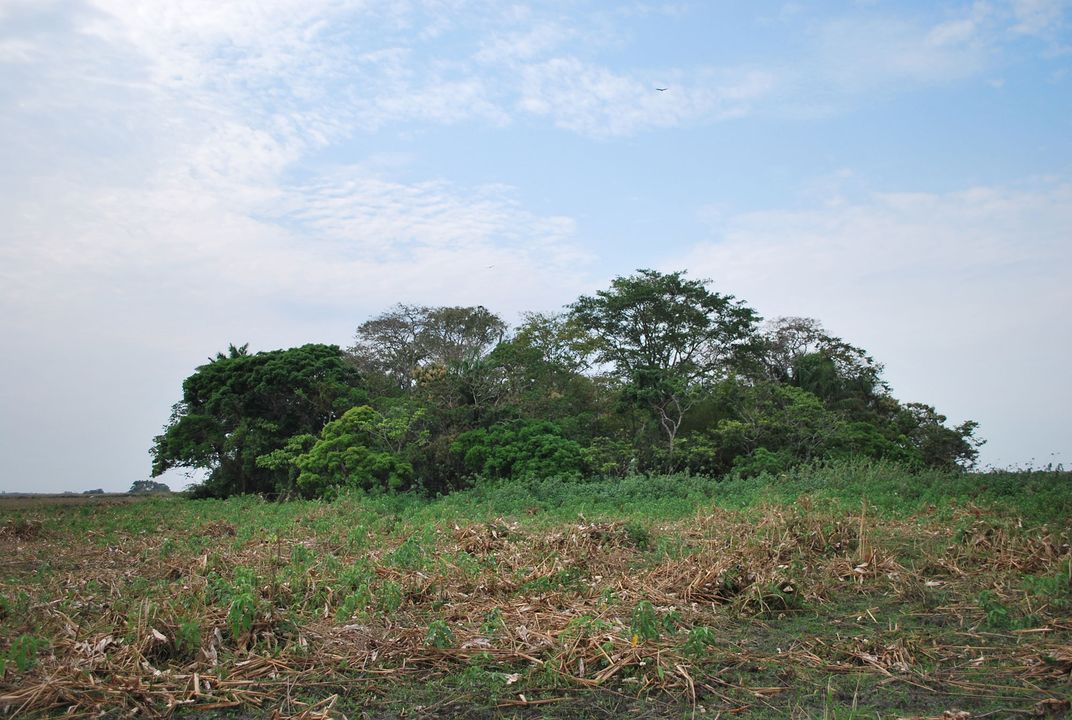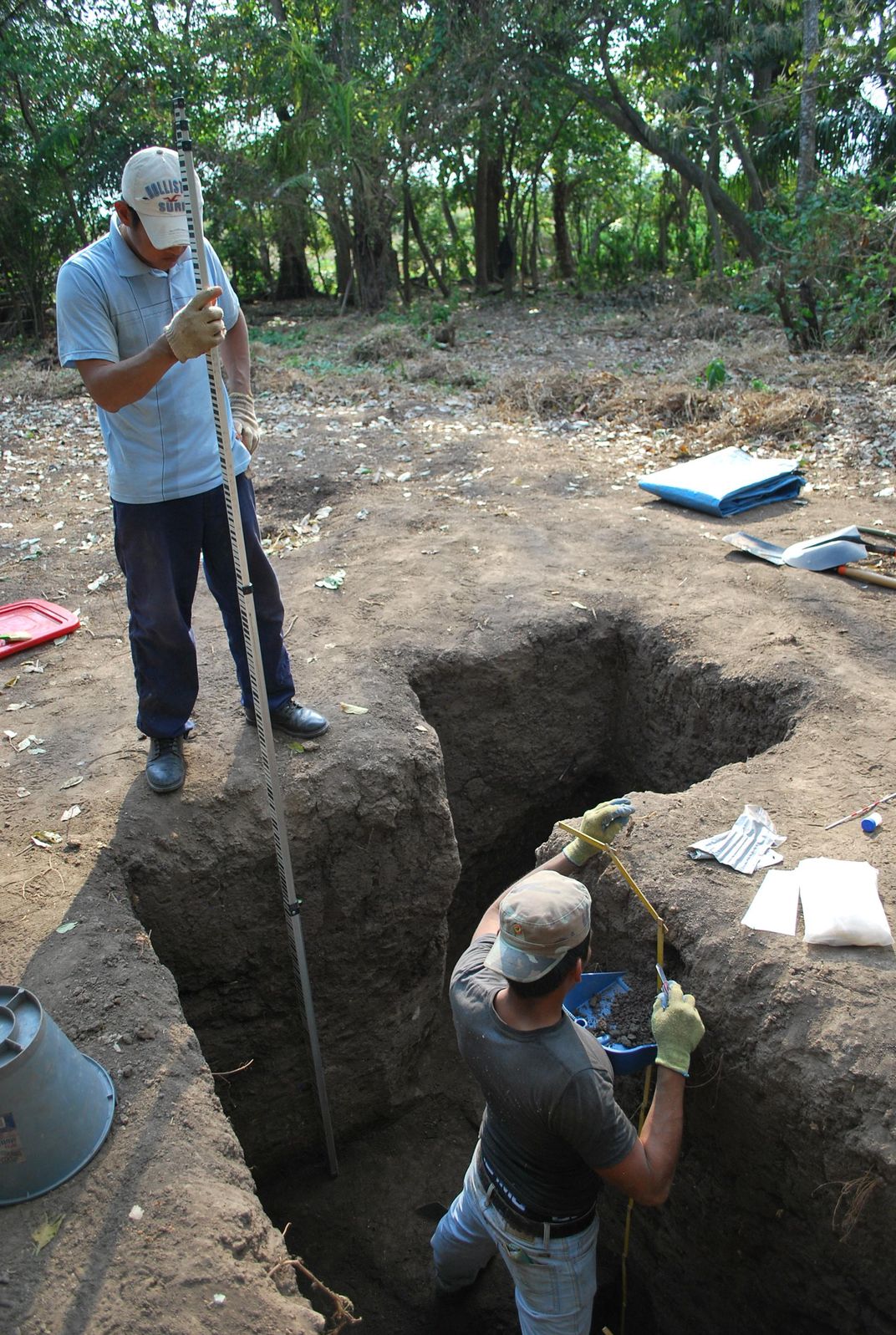Archaeologists Discover Some of the Amazon’s Oldest Human Burials
As early as 10,000 years ago, humans created settlements on elevated forest mounds in parts of southwestern Amazonia
:focal(1019x1752:1020x1753)/https://tf-cmsv2-smithsonianmag-media.s3.amazonaws.com/filer/04/42/0442c85e-da7c-413e-b9b4-2fd3248ef5be/capriles6hr.jpg)
With a name like "Treasure Island," Bolivia's Isla del Tesoro isn't what you'd expect.
First, the island isn't really an island at all, but a landlocked, forested mound about a quarter of the area of a football field that rises slightly from the tropical lowlands of the Bolivian Amazon. The place is only encircled by water when seasonal rains flood the surrounding savanna. And second, no buried gold or chests of jewels have been found there. Isla del Tesoro's treasure is much more subtle.
Archaeologists and earth scientists have been investigating Isla del Tesoro over the last decade, and they've found a 10,600-year-old garbage dump filled with layers and layers of snail shells, animal bones and charcoal from campfires which have accumulated over several millennia. Now, the researchers have more direct evidence that the forest island was created by humans: the remains of a person who was buried intentionally at the site at least 6,300 years ago.
The grave is one of five human burials that were recently uncovered in the artificial forest islands of Bolivia's Llanos de Mojos region, according to a study published today in Science Advances.

"As far as I am aware, these are the oldest human remains documented in southwestern Amazonia," says José Capriles, the study's lead author and an assistant professor of anthropology at Pennsylvania State University. "There are older human skeletons from neighboring regions such the karstic cave complexes of the Mina Gerais region in Brazil or the Andean highlands, but not from this region."
In the Amazon lowlands, researchers rarely find burials or any archaeological remains from the period before ceramics were developed. The acidic soil and tropical climate often prevent the preservation of human remains or artifacts, but the abundance of calcium carbonate from shells helped to preserve the newly uncovered burial sites.
The burials and refuse heaps attest that hunter-gatherers occupied this region earlier than archaeologists had expected. People on the move generally don't build landfills or bury their dead in specific places, and the archaeological evidence on the Llanos de Moxos forest islands offers new insight into the ways hunter-gatherers were able to permanently alter the landscape, creating seasonal settlements before the dawn of agriculture.
"These sites might represent some of the earliest forms of earthworks in the region," says Bronwen Whitney, a geographer from Northumbria University, who wasn't involved in the new study.
/https://tf-cmsv2-smithsonianmag-media.s3.amazonaws.com/filer/91/9f/919f5d56-a8d1-4bdc-b6de-fcb09b25e4e6/capriles9hr.jpg)
The Llanos de Moxos, a tropical savanna in northern Bolivia, attracts archaeologists because agricultural societies built an extensive network of ceremonial mounds, raised fields, roads and canals in the region beginning around 2,500 years ago. Study coauthor Umberto Lombardo, a geographer and earth scientist at the University of Bern, says he was particularly intrigued by the forest islands that stuck out of the landscape.
"When I first surveyed Isla del Tesoro in 2007, I was completely lost," Lombardo says. "I could not imagine what that was. I thought it had to be anthropogenic because I could not think of any natural process that could create such a deposit. However, it was only after the lab analyses that I started realizing that these islands not only were anthropogenic but actually far older than any other known archaeological remains in the whole region."
Lombardo, Capriles and colleagues published their initial results from Isla del Tesoro and two other forest islands in 2013 in the journal PLOS ONE. But over the course of excavations between 2012 and 2015, the researchers also found burials—one at Isla del Tesoro, three at a forest island called La Chacra and one at a forest island called San Pablo. The skeletons had been entombed in calcium carbonate from the surrounding shells, helping to preserve the remains in the hot and humid Amazon environment. Based on radiocarbon dating of nearby material, the researchers believe these burials are more than 6,000 years old.
Scientists think that during the rainy season, when the Llanos de Moxos flooded, people camped out on the forest islands collecting snails, swamp eels, catfish and other creatures from the surrounding wetlands. The forest islands were probably not intentional earthworks, but rather were created as people kept returning to the same high-ground camps over and over again between 10,600 and 4,000 years ago.
"Once they started dropping food waste and other remains in one site, they ameliorated the fertility of this site and elevated its topography over the landscape," Lombardo says. "These two processes made this site covered with forest, providing shade and construction materials. Also, it became elevated and remained above the water level during the seasonal flood. Basically, the more the site was occupied, the better it became for further occupation."

Researchers now know that the invention of agriculture wasn't a single event occurring in the Middle East's Fertile Crescent and spreading to other regions. Rather, farming was independently developed in several different places around the globe. Lombardo says that, based on genetic evidence, many scholars think southwestern Amazonia was one of the earliest centers of plant domestication in South America. The region may have been a hotspot for crops like manioc, sweet potatoes, wild rice, chili peppers and peanuts.
Some of the behaviors observed on the Llanos de Moxos forest islands could have even laid the groundwork for farming, the research team says. For example, the increased consumption of low-return foods like snails suggests the foragers may have started to deplete some of their other food resources. Intentional burials could also be a sign of increased territoriality and decreased mobility, driving foragers to begin experimenting with agriculture.
Whitney says that although the study brings fresh understanding of the early foragers, our knowledge still contains gaps regarding how these populations became farmers, which the discovery of additional sites could fill. "As the authors note, there is encouraging evidence that new sites with longer sequences will soon be discovered to enable in-depth study of the emergence of agricultural societies."
John Walker, an archaeologist at the University of Central Florida who has studied the Llanos de Moxos, says the new findings are a "significant step" toward better understanding the long-term heritage of indigenous Amazonians, who have historically combined all kinds of economic strategies to sustain their lifestyle, including farming, fishing, foraging and forest management.
"There are many thousands of forest islands like these three, and they were clearly very important places to pre-Columbian communities for a very long time," Walker says. "This paper does a great service in showing how long that story is."